calsfoundation@cals.org
Waldron (Scott County)
County Seat
| Latitude and Longitude: | 094°05’30″W 34°53’52″N |
| Elevation: | 665 feet |
| Area: | 5.63 square miles (2020 Census) |
| Population: | 3,386 (2020 Census) |
| Incorporated: | December 17, 1852 |
Historical population as per the U.S. Census:
|
1810 |
1820 |
1830 |
1840 |
1850 |
1860 |
1870 |
1880 |
1890 |
1900 |
|
– |
– |
– |
– |
– |
– |
162 |
239 |
487 |
487 |
|
1910 |
1920 |
1930 |
1940 |
1950 |
1960 |
1970 |
1980 |
1990 |
2000 |
|
900 |
918 |
1,077 |
1,298 |
1,292 |
1,619 |
2,132 |
2,642 |
3,024 |
3,508 |
|
2010 |
2020 |
|
|
|
|
|
|
|
|
|
3,618 |
3,386 |
|
|
|
|
|
|
|
|
Surrounded by forested ridges and wide fertile valleys, Waldron is located fifty miles south of Fort Smith (Sebastian County), near the Oklahoma border in Scott County. It is situated on the South Fork of the Poteau River in the Ouachita Mountains. The town, the seat of Scott County, is centrally located on the north-south highway artery on the western side of the state and is within easy reach of air, train, or truck shipping facilities.
Louisiana Purchase through the Gilded Age
The founder of Waldron, William Grandison (W. G.) Featherston, moved to the area in 1832 with his mother, wife, and four children. He built a store/tavern on his property where Main Street was later constructed. A post office named Poteau Valley was established at this location in 1838, with W. G. Featherston as the first postmaster. In 1843, his brother Edward wrested the post office from him and moved it northeast to a new community called Winfield. In 1845, W. G. Featherston donated ten acres of land to establish a town and county seat at Poteau Valley and hired engineer W. P. Waldron to survey and lay out the town. The town of Waldron was named in his honor.
The village of Waldron was incorporated as a town on December 17, 1852. The original log courthouse, Featherston’s barn, was located on Main Street and was used until a new courthouse was built next to the barn in 1859. The production of raw material on the surrounding farms and forests sustained the early economy. The landowners sold cotton, corn, and lumber, enabling them to buy or barter for processed or manufactured goods. The businessmen of Waldron provided cotton gins, lumber mills, and grist mills for the yeoman farmers and sawmill operators. Early boarding houses and hotels provided accommodations for travelers along the Fort Smith/Red River Road, the major western Arkansas corridor passing through the center of Waldron. The needs of the people in the community dictated the types of businesses in Waldron, and a “way-of-life” system evolved.
The Civil War brought four attacks on Waldron in 1863 but the town did not experience its first major setback until some of the buildings were burned by the departing occupying forces of the Second Kansas Cavalry in 1864. The Union forces were sent to Waldron to capture the Confederate forces and to guard the southern and western military roads leading to Fort Smith. After the Civil War, this small western town experienced great difficulty regaining law and order when two factions of the Republican Party expressed strong political views, leading to bloodshed. During the years 1873 to 1879, more than thirty murders occurred, resulting in Governors Elisha B. Baxter, August H. Garland, and William R. Miller ordering the militia to Waldron to restore order.
Early Twentieth Century
The village of Waldron experienced a steady population growth during the first half of the twentieth century. When a terminus of a branch of the Kansas City Southern Railroad (KCS) reached Waldron in 1903, it became an important shipping point, bringing economic growth to the area; the KCS organized the Arkansas Western Railroad in 1904, and it offered transportation from Fort Smith to Heavener, Oklahoma, on to Waldron. A stone jail was built in 1908 to replace the wooden jail. By 1920, the town had a bank, a weekly newspaper, a canning factory, a flour mill, a brick factory, a soda pop plant, an ice and cold storage plant, electricity, telephones, large lumber interests, natural gas, mercantile businesses, and a population of 918 residents. The first automobile arrived in 1912, and horse-drawn wagons and buggies gave way to the automobile, paving the way for car dealerships, gasoline stations, and garages.
The first movie houses in Waldron were small and did not have talking movies, but by the 1930s, a new movie theater adorned Main Street, and talking movies were the rage. The muddy main streets of the town were improved with a cover of a hard surface material, the water systems changed from private wells and cisterns to a central water system, and the outdoor toilets were eliminated when a city sewer system was established. During the early part of the twentieth century, many fine business and residential buildings were constructed, including a two-story red brick school building.
The stark gray granite monuments on the courthouse lawn on Main Street bear witness to the town’s heroes who paid the ultimate price in World War I and World War II.
World War II through the Modern Era
Once on the edge of the nation’s western frontier, the town, from 1941 to 1967, built a city airport and later expanded it. The town is governed by a mayor/city council form of government. The name of the first mayor or leader of the village of Waldron remains a mystery, and all have contributed greatly, but the first female mayor, Una May, made a major contribution to the city by erecting a modern water plant with a water filtering system that could process surface water. This water system made it possible to establish a major poultry processing plant in the city. The leaders of the town have continued to refine services for its people by erecting a spacious hospital, a home for the elderly, and a larger elementary, middle, and high school. In addition to a total renovation of the historic courthouse on Main Street, an additional courthouse building was constructed on First Street. New businesses and restaurants now line the west end of 2nd Street and the Highway 71 bypass. Additionally, lumber processing plants are operational, and new church buildings abound.
Education, Industry, Attractions, and Famous Residents
Since the state-mandated consolidation of rural schools in the 1940s, coupled with the increase in population, the Waldron School District instructs approximately 1,700 students in grades kindergarten through twelve. During the winter break of 2005, high school students transferred to a recently constructed school building. All schools are located on the west side of the city of Waldron and the Highway 71 bypass, and the administration offices are located on the corner of highway U.S. 71 and State Highway 80. Satellite college classes are being conducted in some of the older school buildings.
The poultry industry established in Waldron by Arkansas Valley Poultry in the 1960s is now owned by Tyson Foods Inc. and employs the largest number of people in town. In the recent past, they have diversified the culture of the city by employing Hispanics and Asians (especially Thais) who have successfully blended into the local environment and school system. Historically, the town has had a dearth of African American citizens. In addition to the poultry and lumber industry, Waldron had until 2008 a high-technological industry, STI/Thermo Fisher Environmental Industries, that manufactured air pollution monitoring systems. Employment through the years had been provided by different furniture manufacturers, but all have closed as of 2010.
The Waldron Commercial Historic District encompasses the Old Scott County Jail and the Old Scott County Courthouse, as well as a number of other properties listed on the National Register of Historic Places. Nearby, on Danville Street, is the C. E. Forrester House. The Waldron School Historic District encompasses two early twentieth-century buildings used for education.
Attorney and judge Billy Roy Wilson lived in Waldron as a kid. Wildred R. “Bud” Rice founded a Rice Furniture and Appliance Store in Waldron and later served nearly twenty years in the Arkansas General Assembly. Upon his retirement, Rice was replaced in the state legislature by Evelyn Ammons.
Perhaps the most famous and talented person to whom Waldron can lay claim to fame is composer Anne Shannon Demarest. She composed music for the Alfred Music Company for a great number of years, including a symphonic suite, and was a noted concert pianist and teacher. She was born on November 26, 1919, in the historic Farnsworth House on East Sixth Street and later resided in Arvada, Colorado.
The Scott-Sebastian Regional Library System, headquartered in Greenwood (Sebastian County), provides public library service to five branches in two counties, including a branch in Waldron.
For additional information:
Goodner, Charles E. Scott County in Restrospect. Mansfield, AR: Frank Boyd, 1976.
Goodner, Norman. Scott County Days Gone By. Mansfield, AR: Frank Boyd, 1983.
Gray, Wanda M. Images of America Scott County, Arkansas. Charleston, SC: Arcadia Publishing, 1999.
McCutchen, Henry Grady. History of Scott County, Arkansas. Washington DC: Henry Grady McCutchen, 1922.
Wanda M. Gray
Waldron, Arkansas
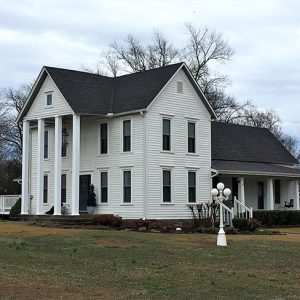 C. E. Forrester House
C. E. Forrester House  Planing Mill
Planing Mill 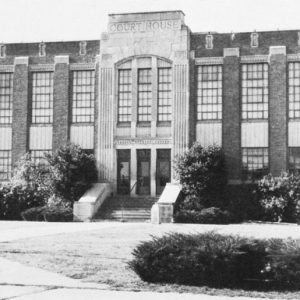 Scott County Courthouse
Scott County Courthouse  Scott County Jail
Scott County Jail  Scott County Map
Scott County Map 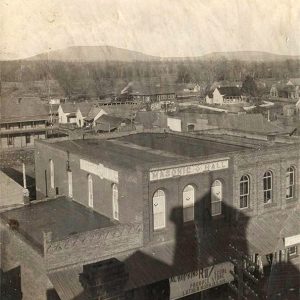 Waldron Aerial View
Waldron Aerial View 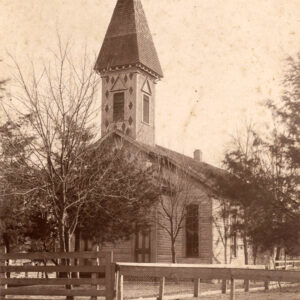 Waldron Church
Waldron Church 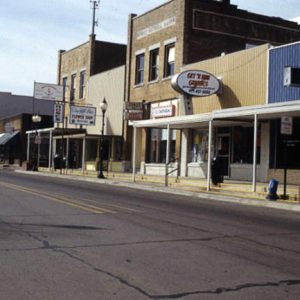 Waldron Commercial Historic District
Waldron Commercial Historic District 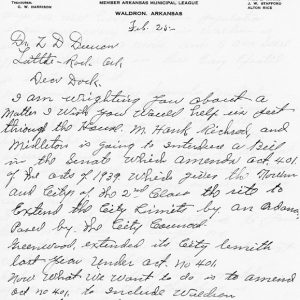 Waldron Letterhead
Waldron Letterhead 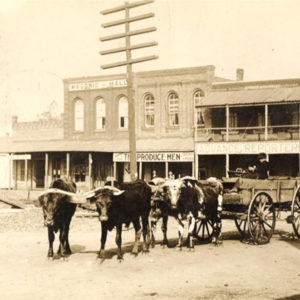 Waldron Produce
Waldron Produce 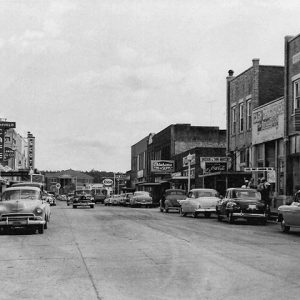 Waldron Street Scene
Waldron Street Scene 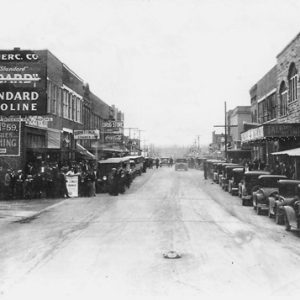 Waldron Street Scene
Waldron Street Scene 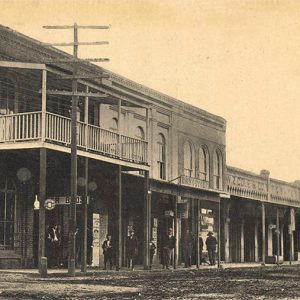 Waldron Street Scene
Waldron Street Scene 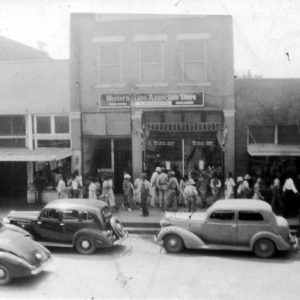 Waldron Western Auto Store
Waldron Western Auto Store 




Comments
No comments on this entry yet.